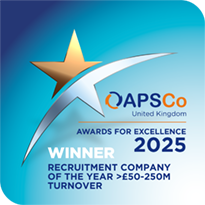The Government’s civil nuclear roadmap to 2050 has launched, and when it comes to delivering a strong legacy of nuclear development and innovation in Britain, collaboration has been at the forefront of how this has been achieved over the decades. Which provides a strong testament to why collaboration must continue to be at the centre of how companies deliver the future of nuclear.
The need for collaboration
The UK is on a mission to bolster its nuclear energy capability, as laid out in the comprehensive roadmap, and a key element in this ambitious plan is the principle of partnership and collaboration. Strong collaboration will allow the country to develop robust and flexible solutions to meet the changing energy needs, including progressing key developments such as Small Modular Reactor (SMR) and Advanced Modular Reactor (AMR) technologies, draw upon multiple stakeholders to share ideas and innovations, look for more efficient and cleaner ways to generate power and advance British nuclear.
To achieve this, various funding initiatives and financial support programmes have been put in place, to support research and development projects as well as injecting cash to progress nuclear new build projects such as Sizewell C – with the Government becoming the majority shareholder.
The supply chain benefits of collaboration
Detailed within the civil nuclear roadmap to 2050 are crucial areas that the Government will focus on to advance both the UK’s nuclear power and defence industries. Including plans to collaborate to align the two sectors to help with access to skills, expertise and supply chain development.
How this will be achieved in the nuclear defence sector is expected when the Government publish their Defence Nuclear Enterprise Command Paper in spring this year, together with recommendations from their Nuclear Skills Taskforce around how the UK can meet the skills demand across the nuclear industries.
What’s clear though is that collaboration will play an important role, making it more crucial than ever that businesses across the supply chain have a clear strategy for both growth and supplier collaboration.
The workforce benefits of collaboration
The strong pipeline of plans and projects to bring the civil nuclear roadmap to life by 2050, comes with the expectation of thousands of new jobs. With around 83,000 people currently working across civil nuclear and defence sectors, it’s projected that will be increase to more than 150,000 workers by 2043 – potentially reaching 180,000.
With this brings the opportunity to welcome more people into the nuclear workforce, targeting complementary sectors that have transferrable skills, whilst looking at diversity and social mobility initiatives that will attract new people into the sector. More work will also need to be done to recruit the next generation of workers, with plans to provide bursary schemes and sponsorships for science, technology, engineering and mathematics programmes. All designed to raise the profile of careers in the nuclear industry and attract more people to achieve the 2050 roadmap.
NRL and the nuclear supply chain
We’ve supported the nuclear power industry since our first day of operations over 40 years ago. Building our recruitment and contracting expertise around the Cumbrian nuclear power industry, we now provide services to our clients globally.
Four decades later we continue to be passionate about the UK’s nuclear sector, working with clients to help them recruit the best talent to support their nuclear projects, and delivering leading Non-Destructive Testing (NDT) services through our radiography and ultrasonics solutions.
Find out more:


.png)


.png)


